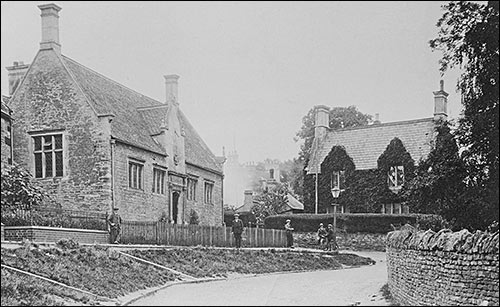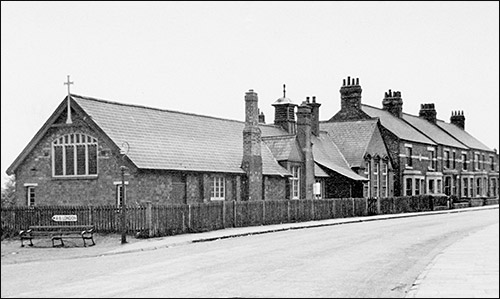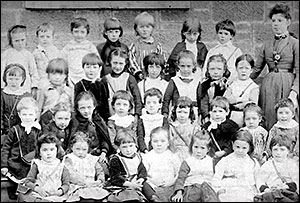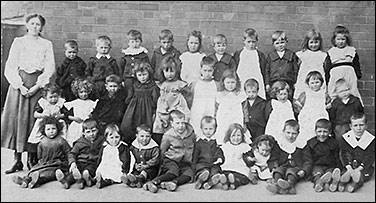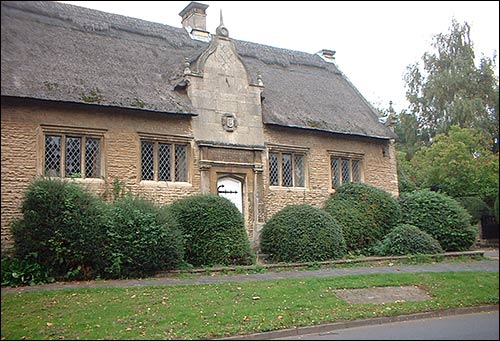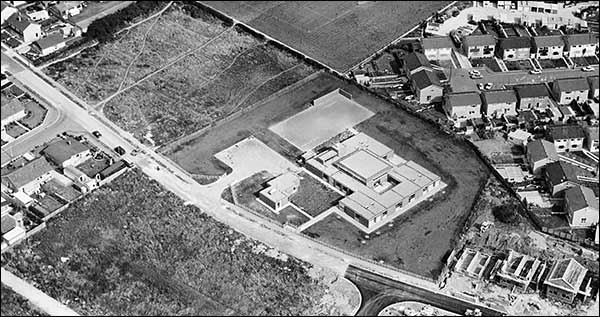| Summary researched and compiled by Margaret Craddock | ||||||||||||||
|
||||||||||||||
|
The full account of the history of Education in Burton Latimer can be found here on the site The first record of teaching in Burton Latimer is found in the Parish Church Registers for 1596 and 1602 as the following extracts show: “That the firste day of Aprill Everard Pie began to teach children in Burton Free Schoole and there taught as hushyer sixe years and a half.” Note: Hushyer – a subordinate teacher or assistant in a school. “Humfrey Stevens, Master of Artes began to teach children in the Chancell of Burton the 30th day of September 1602 and Everard Pie being hushyer to the said Humfrey began then also to teach with him. The said Everard had taughte as hushyer of the Free Schoole there six yeares and a a half than last before.” Burton Latimer was one of the first villages to possess a Grammar School. The school was endowed with £47 per annum arising from 10 acres of land and a house left in 1589 by Margaret Burbank, and an annuity of £7 under a decree of the court of chancery. Margaret Burbank settled lands to the use of a schoolmaster to teach a free grammar school. A schoolhouse was conveyed to trustees by deed of 21 June 1588 by William Vaux, Lord Harrowden and George, his son. The school was built in 1622 to teach boys Latin and Greek. The architecture is comparable with that of Grammar Schools of a similar period at Uppingham, Oundle and Oakham, all of which grew into Public Schools.
The school commenced as a
This Act provided for School Boards to be set up in areas which were short of schools. The Education Department had the task of causing Boards to be formed where necessary. There was a compromise on the religious issue. The right of withdrawal from religious instruction on grounds of conscience in all public elementary schools, including those run by churches was guaranteed. The most important amendment accepted by the Government was the famous Cowper-Temple clause which laid down that in schools – ‘hereafter established by means of local rates, no catechism or religious formulary which is distinctive to any particular denomination shall be taught.’ This Act appeared to have little immediate effect in the village. According to the Education Code of 1871 “8 sq ft is to be provided for each child in average attendance,” and this at once condemned the two rooms in use as hopelessly insufficient for the growing parish. In 1873, to meet the needs of the case, the trustees added another room, classroom and lobbies to the old school at a cost of £500 using some adjoining land acquired by the Rector, the Education Department allowing the use of Mr Bevan’s room for a while longer. In 1876, the Duke of Buccleuch donated a site for a proposed infant school and this was constructed in 1878 at a cost of £800. The headmistress, Mary Ann Stalker, was the wife of the
The
In 1890 the function of the two schools changed in that the old Free Grammar school was used as an Infant School, whilst the purpose-built Infant School, opposite, was doubled in space at a cost of £1,226 – additional land being acquired from the adjoining Manor House property – to become the Mixed Boys and Girls School. Denominational Conflicts The denominational tension, which was a feature of the Cross Report of 1888, was certainly to the fore in the education conflict in the village for the next 10 years. The conflict between the Church party in education and those who supported non-denominational schools was a feature of School Board politics. Newspaper reports of 1898 cite the fact that the provision of schools by the Church in latter years was excessive and was an obvious attempt to dominate elementary education in the parish. The Education Department gave a definite pledge in 1893 that the Board should have first right to supply a deficiency but in fact supported the Church. In fact the Department of Education approved the building of a new
The new
Meanwhile, the controversy continued over the proposed
In July 1898, the memorial stones were laid in anticipation of the building in the High Street of the new undenominational schools at a cost of £2,500 to accommodate 300 children. Mr Thomas Collings, Baptist Minister, was elected Chairman of the School Board and the decision was taken to build a block of schools for the Free Churchmen. An appeal was made to Free Churchmen throughout the land. For many years, working men put aside part of their weekly wage to help the cause. Although approval had not been received from the Educational Department, the Board decided to go ahead and appeared to have the financial support of not only the local people, but those from a very wide area throughout the county and even further. It seems that many towns and villages were keen to support the Board Schools but Burton Latimer was one of the first committees to go ahead. Early in 1899, five Church Managers and five Nonconformist Managers drew up an Agreement for the next five years after both the new schools had been officially recognised by the Education Department. This seemed to bring to an end the controversy regarding the dual system of education, with the exception of continuing antagonism between Church and Nonconformists.
In 1903 the first Foundation Managers were appointed for the Endowed Schools by order of the Board of Education, when the Rector and three members of the then Managers were selected. In 1908 the Church Managers reported that they received notice of the intention of the County Council to build a new council school for 180 infants, adjoining the
In 1915 there was a move by the Local education Authority to close the Finedon Road Infants School, presumably due to lack of pupils. The school managers resolved to keep the school open on account of the distance infants would have to walk to another school. They decided that economy could be effected by reducing staff. This school did, in fact, cease to exist as an infant school in later years. It continued as a
The original
The
The
Two new schools, Meadowside Junior and Infants were provided in 1974 and 1976 to the west of the town because of the large increase in the population due to the expansion in recent years.
Since 1953 all children over the age of 11 have been transported by bus to a choice of Kettering Secondary Schools (formerly decided by the 11+ selection) or more latterly to Barton Seagrave where the purpose-built comprehensive school, Latimer, serves Barton Seagrave and Burton Latimer, as well as those pupils who wish to attend from other parts of the borough. This school welcomed its first pupils in September 1976 and was officially opened by the Duchess of Gloucester on 11 March 1977. Pupils in the 11+ age range from Burton Latimer also have the opportunity to attend other senior schools within the area. |
||||||||||||||
